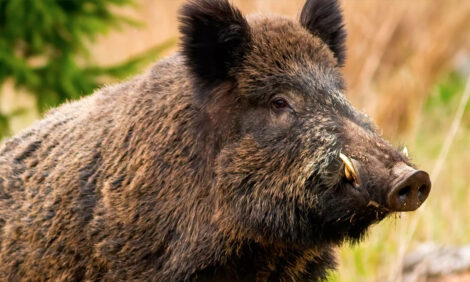



CME: Canadian Breeding Herd Reduction Slowed
US - The government of Canada announced on Friday the details for two programs to aid its beleaguered pork industry, write Steve Meyer and Len Steiner in their Daily Livestock Report for 5 October.One is designed to keep producers with economically viable operations in business while the other is designed to provide an incentive for other producers to exit the business for at least three years.
The Hog Industry Loan Loss Reserve Program (HILLRP) will provide government loan guarantees based on “credible business plans, validated by lenders, demonstrating that the borrower has reasonable potential to repay the loans and maintain a viable agricultural operation.” The program will loan up to $85 per market hog, $30 per weaner (we think that means a 40-45 pound feeder pig) and $25 per iso-wean pigs (we are pretty confident that means a 10 to 12-pound pig). One kicker: Any loans issued under HILLRP must first be used to reimburse the government of Canada for any 2008-09 program payment advances. Our sources in Canada believe that the amount of participation in this portion of the government’s program may be limited due to a) the advance repayment feature which, in effect, removes the cash infusion for an operation and b) the long-term financial losses suffered by Canadian producers which has left questionable the ability of many to devise a “credible business plan” for long-term viability.
The Hog Farm Transition Program (HFTP) is a $C75 million initiative to help producers exit hog production for at least three years. Payment levels and the number of participants will be determined by a tender process. No details were provided but it appears, as we reported last week, to be much like the US dairy herd buyouts run by Cooperatives Working Together. The announcement says there will be a “series of tenders” whose precise dates and funding levels will be determined as the program progresses. HFTP is retroactive to April 1, 2009 so any producers who sold out entire sow barns since that date can submit a tender for payment. Participants must the be the owners of the pigs. If the pigs are in barns owned by someone other than the pig owner, the barn owner(s) must also agree to idle the facilities for three years following the depopulation of breeding animals.
We could find nothing in the materials from Agri-Food Canada or the Canadian Pork Council that specified how the culled animals would be disposed of. We still believe the culled animals will enter normal slaughter channels, thus increasing sow and boar supplies and possibly slowing the reduction of the US breeding herd. We will provide more information as soon as we have it.
As you can see from the graph below, the rate of reduction of Canada’s breeding herd (the fuscia or pink line) has slowed since October when the breeding herd was 8.9 per cent smaller that one year earlier. The 1 July inventory of 1.38 million head was 4.6 per cent lower than last year but we believe the rate of reduction has increased since that time. Canada’s herd fell by 28,700 had from July 1 through September 30, 2008. This year, Canadian commercial sow slaughter has been 3,627 head smaller than last. Last summer’s sow buyout program removed another 19,776 animals during that time period in 2008 and, obviously, has removed none this year. But exports of cull Canadian breeding animals to the US have been 42,911 head larger this year suggesting that the draw-down of Canada’s breeding herd during July-September will be about 20,000 head larger this year. That will put the 1 October herd near 1.32 million head.

The HFTP will cover some of those sows and add to the reductions going forward. It still appears that Canada’s breeding herd is heading for somewhere near 1.2 million head.
One of the drivers is once again the value of the Canadian dollar which has gained 20 per cent vs. the US dollar since it bottomed last March. That change reduces the amount of Canadian dollars received by Canadian producers regardless of where they sell their hogs but reduces only about half of Canadian producers’ production costs by a similar percentage — thus creating a profit squeeze for Canadian producers.








